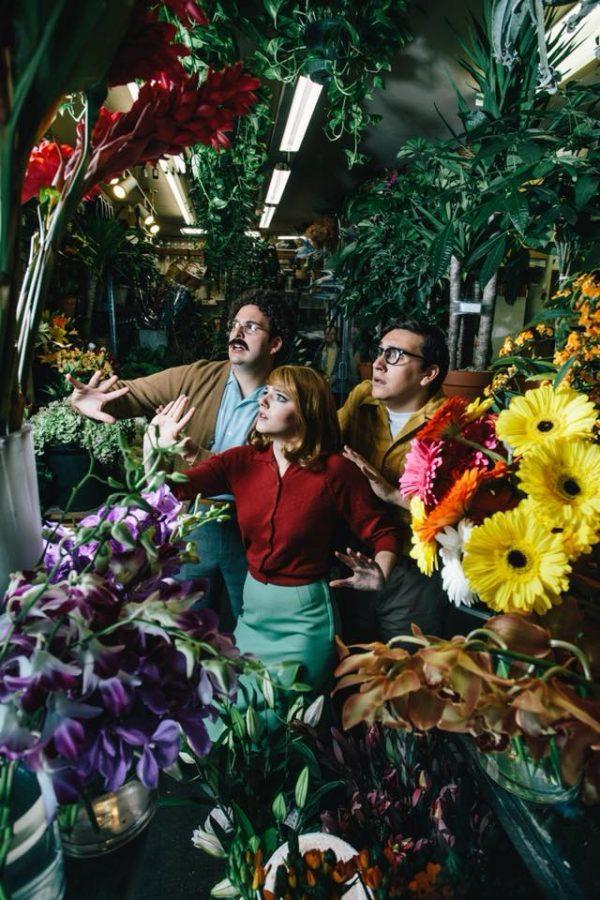Finding Humanity in the Horrors
Tisch New Theatre’s most recent production was Little Shop of Horrors, telling the story of Seymour and an alien plant.
November 6, 2017
Lights up on a seemingly mundane florist in downtown New York. As the Tisch New Theatre’s interpretation of “Little Shop of Horrors” begins, there is very little to indicate the incredible and insane path that the play will take over the next two hours. A Greek chorus of street urchins sets the scene with an ironically vivid and jazzy song about how bad it is to live where they do. The rest of the show mirrors the irony of its opening number, and it is as zany as it is unpredictable. A Broadway classic, the musical depicts the unrequited love story between Seymour and Audrey who work together at a florist’s shop. Bizarre obstacles stand between them: Seymour’s lack of confidence, Audrey’s sadistic dentist boyfriend and an alien plant that feeds on blood.
Carried by characters that are carefully curated to be both lovable and problematic, the show tells a comedic story that still manages to be truthful. Beyond asking you to suspend your disbelief, it requires you to suspend your judgement as you hear their stories and see their behavior justified before your eyes. The evil dentist, Orin (Ray Fanara), can be seen as the secondary antagonist in his blatant cruelty. However, in his hilariously extreme behavior, you can still sense the humanity and tragedy within him. While not an excuse for his behavior, these qualities make the character more dynamic than if he were just another stereotypical villain.
As he reluctantly begins to feed the plant his own blood, it’s easy to see that Seymour’s — played by Steinhardt senior Daniel Youngelman — only way to move up in the world is by sacrificing his humanity and morals to achieve love and success. The setting itself demands intense sacrifices from the characters, leading them all to do heinous things. TNT’s creative team, most notably Gallatin senior Casey Whyland, who directed and choreographed the show, brings out true social commentary from this quirky musical.
The character of Audrey, played by Tisch sophomore Julesy Flavelle, is the most brilliant example of sacrifice in this play. In a show that brings nonstop laughter, Flavelle’s intensely human interpretation of Audrey will bring you to tears. She taps into the character by discovering her primary driving force: we all will risk anything for what we love. Even if we cannot truly achieve real love, we will find a way to make it exist at least in our imaginations.
Due to the show’s intimate setting in the SoHo Playhouse, you truly feel as if you are part of the story. The dynamic set in a small space functions the same way a complex proscenium arch would, and upon walking into the theater, you are instantly brought into the world of the musical. While most of the technical aspects of the show flourished despite the small space — Audrey II, the alien plant, seemed much bigger and more imposing — in some cases it posed a struggle for the actors in terms of choreography.
Overall, the show’s execution went above and beyond the story that is so known and loved by many. The humanity lies in the absurdity, which makes it more than just a classic comedy. While a blend of both tragedy and comedy is essential in a show like “Little Shop of Horrors,” this is characteristic of a theater company with such a long history of producing student work that appears professional. This production breathes life into otherwise stereotypical comedic characters. Rather than looking at Seymour, Audrey and Mr. Mushnik and seeing them as a group of fools haphazardly trying to succeed in a doomed situation, you see them as people who have known nothing but poverty their entire lives and simply seek to find their own personal “somewhere that’s green.”
A version of this article appeared in the Monday, Nov. 6 print edition. Email Emma Hernando at [email protected]
























































































































































